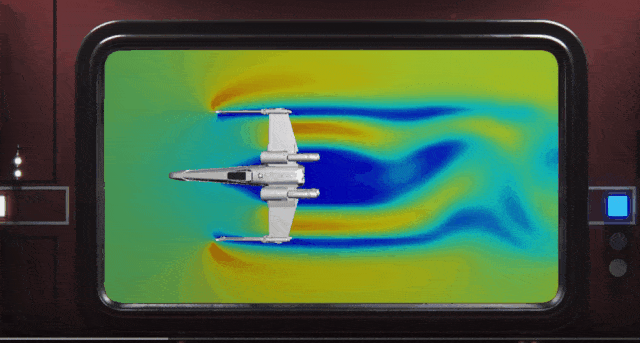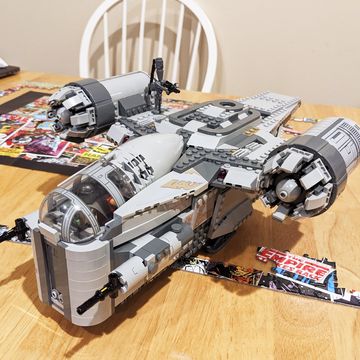Look, we all love Star Wars, and part of that love is picking apart all of the ways it's dumb. The walking tanks make absolutely no sense. The capital ships? Questionably designed. The fighters? Not a whole lot better. And to explore that last bit in even more detail, one endeavoring YouTuber took to analyzing the aerodynamics of some of the series' classic ships to see exactly how they'd fare in atmospheric flight.
Using Autodesk Flow Design, EC Henry calculated the drag coefficient for a number of ships, including the X-Wing and the TIE Fighter, using 3D models. For reference, he compared the drag coefficient of each of these ships against some basic shapes for a baseline, and one actual real-life fighter jet.
The results? Star Wars fighters on average have a drag coefficient somewhere around that of a flying sphere, which is to say: not great. The original X-Wing's drag coefficient is .45 to a sphere's .47. The T-70 from the current trilogy fares a bit better, with a coefficient of .24, a pretty significant improvement.
Of all the ships, the TIE Fighter is by far the worst, with a coefficient of .98 which makes it only very slightly better than a literal flying brick. As for the best of all? Well, the prequels got something right here, but even the Naboo N-1's impressive .1 drag coefficient pales in comparison to the .02 achieved by an actual fighter jet like the F-4 Phantom, which existed at the time of the original trilogy.
Nitpicking is a fun little hobby but there are a few points to consider in Star Wars' defense. A bad drag coefficient means literally nothing in the vacuum of space, though many of these fighters can be spotted pulling maneuvers in atmosphere as well in various films. To explain that, the fiction offers up anti-gravity repulsorlift technology and the possibility of using deflector shields to give ungainly ships a better, invisible flight profile.
Though if that's the case, why not cut down on production costs by just making a bunch of easily manufactured flying cubes? Well, maybe we shouldn't think about it too hard.
Source: EC Henry












